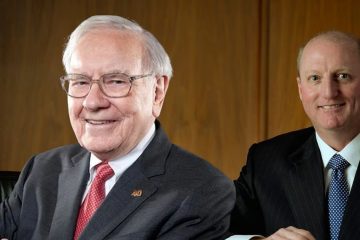Power traders for hedge funds on Wall Street

Power traders have emerged as a formidable presence on Wall Street. Power has become a hot commodity for hedge funds, who are attracted to the unpredictable nature of electricity and natural-gas prices. Companies are using attractive incentives such as generous sign-on bonuses, lucrative profit-share agreements, and even providing company cars with drivers to entice traders away from utilities, banks, and competing investment firms.
“Today, we find ourselves in a unique position,” remarked Juan Penelas, co-founder of e360 Power, a Texas-based hedge-fund firm specializing in electricity trading. The amount of assets under management has nearly doubled since the beginning of 2022, reaching approximately $470 million.
Electricity is a highly sought-after sector at HC Group, a London-based headhunting firm specializing in commodities. According to an executive at the company, over the past year, the firm has seen a greater number of hires in the power sector compared to the oil sector, which has been beneficial for financial firms.
Two factors are driving the current economic growth: the increasing use of energy-intensive artificial intelligence and the shift towards electrification as part of the energy transition. According to the International Energy Agency, AI’s energy consumption is expected to increase by a factor of 10 in the next two years.
According to a McKinsey study, there has been a significant increase of 35% in global trading volumes for electricity futures from 2019 to 2023. Certain regions have experienced significant growth, with Nordic volumes increasing by 14 times and those in the U.K. tripling.
Several prominent hedge funds have taken notice, as reported by individuals familiar with the situation. This includes some of the largest multimanager firms globally, known for their expertise in diversifying investments across various markets.
Citadel, with $63 billion under management, was quick to take action and has recently expanded its team. Millennium Management and Balyasny Asset Management have also expanded their teams, acquiring traders and analysts from various market participants, including utilities.
Bobby Jain, who has a background in finance, recently started his own hedge-fund firm with an impressive $5.3 billion in commitments. Jain Global has recently added over 10 portfolio managers to their team, focusing specifically on commodities. This move is expected to greatly enhance their expertise in this important asset class. According to insiders, power and gas will be the primary areas of interest within the commodities sector.
Power is a highly unpredictable commodity. Consider Brent, the global benchmark for crude oil, to understand the extent of its fluctuations. It has fluctuated between approximately $73 and $95 per barrel in the past year. According to McKinsey, the price could have fluctuated between negative levels and $850 a barrel if it behaved similarly to power trading.
Power markets are characterized by their volatility and complexity, which can create both trading opportunities and risks. Throughout history, various companies, such as JPMorgan and Électricité de France (EDF), have encountered challenges when it comes to power trading. The infamous case of Enron serves as a stark reminder of the consequences that can arise from such difficulties. Making incorrect bets can result in significant losses, which is a concern for regulators who want to prevent sudden increases in energy costs for individuals and companies.
Over time, there has been a shift in the balance of power in the market, leading to a decreased role for investment banks.
In the past, several major banks, including Barclays and Deutsche Bank, operated trading desks dedicated to energy trading. However, due to increased regulatory scrutiny and higher capital requirements, many companies decided to scale back their market presence.
Several banks are no longer able to sustain their presence in this industry. According to Anthony Gordon, a former head of energy at Och-Ziff Capital Management, hedge funds face fewer obstacles. He currently holds a position as a partner at Avaio Capital, a private-equity firm specializing in investments in energy infrastructure.
When it comes to the banking and utilities industries, hedge funds stand out for their less stringent regulations and the potential for larger profits. According to headhunters and traders, top power traders usually earn a share of the profit they generate for their funds, which typically ranges from 12% to 30%. This is similar to the profit shares that portfolio managers at large hedge-fund firms receive.
The firms are also tapping into the expertise of professionals from other companies.
Alex Watson, a natural-gas trader at French utility EDF, experienced significant gains as gas prices surged as a result of disruptions to Russian supply. According to insiders, the utility made millions from its astute observation of price disparities between Europe and the UK. Watson joined BlueCrest Capital Management, a private investment firm established by billionaire Mike Platt, in the previous year.
Portfolio managers have the potential to generate significant profits, reaching tens or even hundreds of millions of dollars in a favorable year, as stated by an executive at HC Group.
According to a source familiar with the terms, Freepoint Commodities, a hedge-fund manager based in Connecticut that specializes in energy, is providing new portfolio managers with the opportunity to earn 50% of the profit they generate in their first year. According to this individual, the power team for this commodity is larger than any other.
According to headhunters and traders, top traders are being enticed with lucrative signing bonuses and perks such as company cars with drivers to join these funds. Upon arrival, individuals are faced with a daunting task: to replicate their previous income. According to rival traders and commodities executives, this may not be possible.
The power and gas markets experienced significant volatility in ’22 and ’23 due to the Ukraine invasion. If you happened to be on the favorable side of trades, you unintentionally achieved remarkable returns. According to an executive at the commodity-trading firm Vitol, there were individuals who earned a hundred times their usual income. This year, the markets have been relatively stable, at least for now. It is extremely difficult to earn a similar amount of money without some sort of extraordinary occurrence.
Given the unique circumstances caused by Russia’s invasion of Ukraine, there is a growing belief among market participants that a combination of factors such as increasing energy demand, outdated grid infrastructure, and the ongoing development of clean energy could lead to additional unexpected events or heightened volatility.
Over 1,200 coal-fired units have been closed in the United States and Europe since 2000, as reported by Global Energy Monitor. Electricity systems have become more susceptible to extreme weather due to the reliance on coal as a stable energy source, despite its significant environmental impact. The Group of Seven countries have committed to shutting down all of their coal plants by 2035.
One effective approach is to purchase electricity at a lower cost during the early morning hours when demand is minimal and then sell it during times of high demand, such as in the late afternoon. Weather fluctuations can lead to significant fluctuations in prices in regions with a high concentration of renewable energy sources. Unforeseen weather disturbances during daylight hours can have a negative impact on the energy output of solar farms, resulting in an increase in prices.










